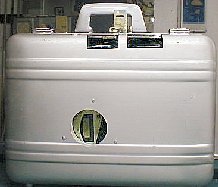Long-Term Noise Recording
& Monitoring
How can you document an
intermittent noise problem?
Noise Recordings in Court
Our calibrated recordings have
proven to be powerful evidence of noise disturbances in court. They can
show a pattern of nuisance
in a way that a single visit from an acoustic consultant cannot. And
when they are played back in court they allow the judge to experience
the noise personally, at the same level that it occurred in our
client's premises. This gives the judge a better sense of the problem
than can be conveyed by a graph or numbers on a page.
Here are three cases in
which our recordings were instrumental in helping our clients win:
We get calls like this all the
time. An upstairs neighbor stomps around, moves furniture and vacuums
in the middle of the night. The conga (or trumpet, or piano) player
next door practices for an hour a day, but each day at a different
time. A water pump makes
a loud hum at random intervals. The restaurant downstairs plays loud
music, but only when there's a party. The opera teacher upstairs sings
whenever the spirit moves her. And of course, a family with "active"
children just moved in upstairs.
You can't "teleport" an
acoustic consultant or DEP inspector into your apartment to catch such
short-lived noises when they happen. And even if you could, you would
only have documented one
occurrence. Bass:
Is "bass" or "vibration" your problem? The DEP's simple "dBA-only"
meters won't measure that kind of noise adequately.
Click
for more details.
This is very important.
Residents and even businesses are given a certain amount of leeway for
noise that happens only very rarely. In one case we know of, co-op residents lost their case
against a restaurant because the
consultant they hired (not Acoustilog) made their only measurements on
New Year's Eve. One party, even a loud one, does not demonstrate a "pattern
of nuisance".
Your noise problem may indeed
be a recurring one, but unless you can present convincing evidence to
demonstrate that, your opponents can claim that you have "cherry
picked" one unusually bad incident.
News:
Appellate Court issues
injunction in favor of our clients, based on evidence obtained using
the Acoustilog Long-Term
Recording System

We have assembled a tamper-proof
calibrated recording system for
situations like this. The studio-quality digital audio recorder records
sound from one or more calibrated microphones and vibration sensors.
Depending on the number of channels, the system can record for up to
a full month 24/7. Our clients can engage the "Record": function whenever they
hear the noise of interest. In fact, the system will actually record
sound starting 30 seconds
before the "Record" button is
pressed, allowing the user to "catch" even very short-lived sounds. The system can even discriminate against noises coming from other sources to show where the sound is coming from.
This system not only allows us to catch unpredictable noises, it can document a pattern of dozens or even hundreds of occurrences; exactly the strong evidence you will need.
Can I make my own recordings using my phone?

Most of the people who call us have tried to make phone recordings of the noises they hear ... unsuccessfully. There are many reasons why this does not work.
- Phones do not accurately pick up the low frequencies like footfalls, machine hums and bass music - the sounds most likely to cause complaints. This is obvious when the recordings are played back.
- Phones are not calibrated and do not meet the rigorous standards required for professional measurements.
- Recordings made by the "complainant" invite suspicion that they were not made fairly.
There are other reasons as well. Our system avoids all of these shortcomings. Our recordings are calibrated, accurate in all frequency ranges and made by a disinterested third party.
Courtroom Sound Playback

The system is calibrated on
site. This allows us to play
back the audio in court at the
same level that it was heard in the client's home. This provides very
convincing evidence. The judge doesn't have to imagine what "89 dB at
31.5 Hz" sounds like; we can demonstrate it. The date and exact time of
each occurrence is also documented on the recording, allowing
time-correlated graphs of the noise disturbance to be made.
The chart at right displays the sound levels from an actual long-term recording. The normally quiet apartment suddenly becomes extremely noisy; the spikes on the chart represent bangs caused by weight drops in the gym downstairs. The court can see this chart and follow along as we play back the actual sound in the courtroom.
 ®
®


